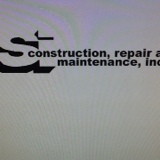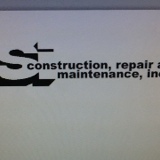Opening
-
Document No.
-
Audit Title
-
Client / Site
-
Conducted on
-
Prepared by
-
Location
-
Personnel
Information
WHAT ARE THE HAZARDS
-
Highway construction often means working side by side with 3,000 pounds of metal speeding along two or three feet from you eight hours a day! Consequently, about a hundred workers die each year from highway, street, bridge, and tunnel construction accidents.
Traffic is not the only concern. Almost as many workers are killed by heavy equipment. Also, a number of fatalities occur when heavy equipment rolls over. Remaining hazards involve heavy lifting, falling hazards (I.e., bridge sites), overhead power lines, underground electrical lines, underground electrical equipment, poorly maintained tools and jacks, unguarded moving parts, excavation cave-ins, vibrating tools, carbon monoxide from vehicle exhaust, asphalt fumes, extreme heat/cold, rain and fog, and darkness at night.
HOW CAN YOU PROTECT YOURSELF?
-
While there are many hazards, there are also many ways to protect yourself:
Wear highly visible clothing and a light colored hard hat. During the day, you must wear a vest, shirt, or jacket that is orange, yellow, yellow-green, or fluorescent version of these colors. At night, the vest, shirt, or jacket must be retroreflected.
Work where drivers can see you, but as far as possible from traffic. Drivers may not be able to see you when the sun is low in the sky or when it is rainy, foggy, or dark.
Get in and out of traffic spaces and heavy equipment areas quickly and safely.
Stay alert and don't wear a radio headset.
Do not operate equipment or a vehicle unless you are trained and authorized.
Always wear your seat belt when operating equipment or vehicles.
Make visual contact with workers on foot near you, before moving equipment.
Make sure equipment is inspected and corrected daily.
Use equipment with rollover protective structures.
Chock two wheels when leaving equipment.
If you must park your vehicle near traffic, park where drivers can see you (do not park around blind corners).
If working on pile driving, know special hazards of this work.
If working on trenching and/or shoring associated with a work zone, be sure all excavations are being properly shored and be aware of cave-in hazards.
If working on a bridge over another roadway or over water, use appropriate fall protection.
Sign off sheet
This sign-off sheet documents the employees who taken part in a training session on Heavy Construction Safety. This session covered: Recognition and avoidance of unsafe conditions (I.e., vehicles, equipment, carbon monoxide, asphalt fumes, extreme heat/cold, rain and fog, darkness). OSHA rules for workers under £1926.200-.203. Controlling or eliminating any hazards or other exposure (I.e., vehicles, equipment, carbon monoxide, asphalt fumes, extreme heat/cold, rain and fog, darkness). Traffic patterns, work zone layout, escape routes, traffic control methods, and how to use and place traffic control devices, if the trainee is responsible for controlling traffic. Elements separating workers on foot from equipment. Less vulnerable ways to work next to traffic. Night hazards and protective measures, including retroreflecting garments. Proper life-saving personal protective equipment and high-visibility garments. Communication methods and alarms. How to operate equipment/vehicles and prevent rollovers. The space below is for employees to "sign-off" that they were in attendance.
-
Select date
-
Add signature
-
Add signature
-
Add signature
-
Add signature
-
Add signature
-
Add signature
-
Add signature
-
Add signature
-
Add signature
-
Add signature








